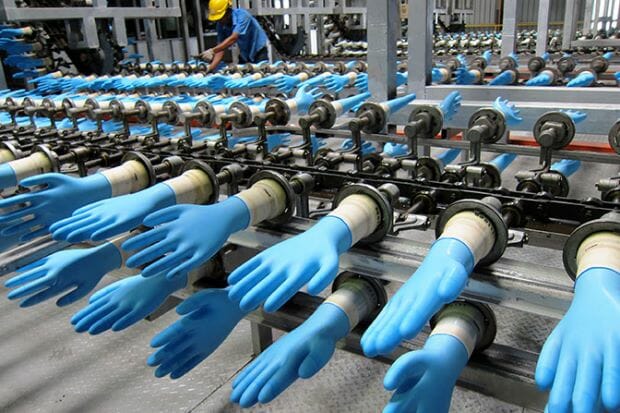Glove players dipped into their second consecutive quarterly losses as reported in the recently concluded quarter one calendar year 2023 results season.
However, there was a slight sequential improvement with 25%/25%/50% of results coming above/within/below MIDF Research (MIDF)’s forecasts versus all players coming in below both MIDF and consensus forecasts in the previous quarter four calendar year 2022 result season.
Generally, all players continue to be hit by the excess capacity leading to reluctance of customers to commit sizeable orders and holding substantial stocks on expectations of further price decline.
Then there is the margin erosion as costs remain elevated including energy and labour costs against falling average selling price of USD20/1,000 pieces versus cost of USD21/1,000 pieces, and the reduced economies of scale arising from volume that is less than optimum, particularly, due to poor cost absorption.
The recent round of results reported by glove makers suggested that players are likely to continue to face a challenging and competitive business landscape due to elevated costs, subdued average selling price and massive capacity leading to suppressed industry utilisation rate.
As gathered from our channel checks, players believe selling prices have bottomed out and will attempt to raise prices in the financial year 2024. However, mindful that the prospect of raising average selling price is challenging due to the current massive overcapacity situation, with only a handful of customers agreeing thus far.
Separately, taking stock, players have received mixed responses in terms of customer inventory levels. Some customers are still stuck with high inventories while others are beginning to slowly restock. Generally, there is no urgency for buyers to place sizable orders or hold substantial stocks as supply is plentiful and readily available.
Case in point, buyers can turn to Chinese manufacturers which are still selling below USD20/1,000 pieces, at USD17/1,000 pieces. Any attempt to raise average selling price could cause a reduction in volume sales, in MIDF’s view.
“We believe the market is witnessing its first sign of the glove industry transitioning into a rationalisation and consolidation phase amidst the massive industry over-capacity,” said MIDF.
Indications are pointing towards an improvement in supply-demand equilibrium as players take the opportunity to shut down older plants or productions lines that are no longer efficient and speed up the industry consolidation.
Specifically, HARTA is decommissioning its Bestari Jaya (BJ) production facility, and consolidating operations at its Next Generation Integrated Glove Manufacturing Complex (NGC) in Sepang.
BJ consists of 4 production plants with 40 production lines or 13 billion pieces per annum. The decommissioning will reduce its production capacity by 30% to 31 billion pieces per annum and is expected to be completed by end-2023.
Similarly, TOPGLOV is decommissioning two plants with estimated 5 billion pieces of capacity or 4% of its 100 billion installed capacity. On the other hand, Supermax has decommissioned 3 older plants, taking out an estimated 3 billion pieces per annum from its total capacity.
“We expect the operating environment to continue to remain challenging in subsequent quarters being plagued by massive oversupply. Nevertheless, we expect the oversupply situation to be less acute and gradually improve following signs of players culling production capacity via decommissioning of selective plants,” said MIDF.
Based on our estimates, the demand-supply situation will only start to head towards equilibrium in 2025 when there is virtually no more new capacity coming onstream while the global demand for gloves continues to rise by 15% per annum underpinned by rising hygiene awareness.
MARGMA projects 12%-15% growth in the global demand for rubber gloves annually from 2023, following an estimated 19% contraction to 399 billion pieces in 2022.
“It believes the supply-demand equilibrium may return in 6-9 months. However, we beg to differ, expecting the overcapacity situation to persist at least over the next 12 months. We project the demand for gloves to rise by 15% in 2023, which is consistent with MARGMA’s forecast,” said MIDF.
On the supply side, MIDF is now factoring a reduction of 21 billion pieces of gloves in the system by the end of financial year 2023. This will result in the excess capacity rising by 4% to 115 billion pieces from 112 billion pieces in 2022.
Despite the improvement, the overcapacity still persists which means low prices and depressed plant utilisation will continue to plague the industry in 2023.
MIDF’s 2023 forecasts assume an average selling price per 1,000 pieces of USD20, translating to an estimated 10% decline over 2022, and an average plant utilisation of 50% versus an estimated 60% in 2022.









